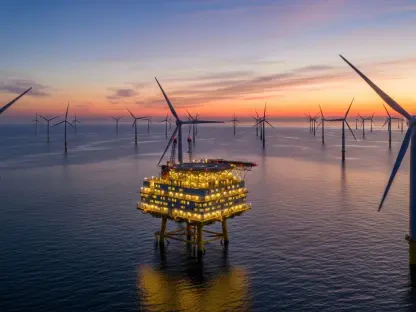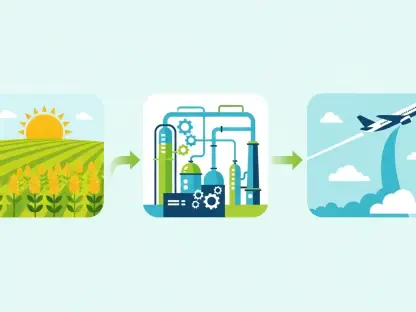China’s pivotal role in the global green economy is reshaping economic dynamics worldwide. Through significant advancements and strategic investments in renewable energy and green technology, China has positioned itself as a leader in this critical sector. This article explores the various facets of China’s influence and its implications for both developed and developing nations.
China’s Leadership in Green Energy
Government Investments and Policies
China’s government has made substantial investments in renewable energy technologies, driving the nation’s transition to a green economy. Policies aimed at reducing carbon emissions and promoting sustainable practices have been instrumental in this shift. These initiatives have not only bolstered China’s domestic green energy production but also positioned the country as a major player in the global market.
Significant government backing has been crucial in building an extensive renewable energy infrastructure. This includes large-scale solar farms, wind turbine installations, and advancements in hydroelectric power. China has also introduced subsidies and tax incentives to encourage companies and individuals to adopt green technologies. Furthermore, stringent environmental regulations have reduced reliance on coal, further facilitating the transition to cleaner energy sources. By implementing these policies, China has set a strong example for other nations aiming to follow a similar path toward sustainability.
Economic Benefits of Renewable Energy
The economic advantages of leading the renewable energy sector are significant. By dominating the production and consumption of green technologies, China stands to gain economically. This leadership role has enabled China to influence global energy markets and set trends that other nations follow.
With a commanding position in green technology markets, China can dictate terms and set standards in renewable energy industries worldwide. This dominance has resulted in increased exports of green technology products and services, boosting the nation’s economic growth. Additionally, job creation within the renewable energy sector has provided new employment opportunities, contributing to overall economic stability. As countries across the globe seek to reduce carbon emissions and adopt sustainable practices, they increasingly look to China for guidance and expertise, further solidifying its economic leadership.
Global Collaborative Efforts
G20 Summit and International Cooperation
At the G20 summit, world leaders emphasized the necessity of a global transition to renewable energy to combat climate change. Collaboration between developed and developing nations is crucial to ensure equitable access to technology and financial resources. Ambitious pledges were made to mobilize trillions of dollars for the green transition, highlighting the importance of international cooperation.
During these discussions, the focus was on creating frameworks for shared innovation and technology transfer to help nations at different economic levels transition to renewable energy. The summit also underscored the importance of financing green projects in developing countries, where access to resources is often limited. Global leaders agreed that a unified approach is paramount to addressing the adverse effects of climate change effectively. The consensus was that by pooling resources and sharing expertise, the international community could accelerate the adoption of green energy on a worldwide scale.
Equitable Distribution of Resources
Ensuring that developing nations are not left behind in the green transition is a key concern. Equitable distribution of technology and financial resources is essential for a successful global shift to renewable energy. Collaborative efforts aim to bridge the gap between the Global North and South, promoting sustainable development worldwide.
The equitable distribution of green technology necessitates international frameworks and policies that support less-developed nations. This includes creating financial mechanisms to reduce the cost burden of adopting sustainable technologies. Additionally, training programs are essential to build local expertise in renewable energy sectors. Developing nations benefit not only from technology access but also from knowledge transfer that drives innovation and self-sufficiency. These initiatives are designed to foster inclusive growth, ensuring that the benefits of the green transition are shared widely, lifting millions out of poverty and towards sustainable development.
Impact on Developing Nations
Belt and Road Initiative
China’s Belt and Road Initiative (BRI) extends its influence beyond renewable energy by integrating developing nations, particularly in Africa. This initiative promotes technology sharing and infrastructure development, fostering sustainable economic growth in less-developed countries. By providing access to green technologies, China is helping these nations transition to a more sustainable future.
The BRI’s focus on infrastructure development has led to the construction of renewable energy plants, efficient transportation networks, and modern telecommunications systems in partner countries. This initiative not only boosts local economies but also creates a foundation for long-term sustainable development. By enabling access to cutting-edge green technologies, the BRI helps developing nations reduce their carbon footprints and build resilient economies. Additionally, partnerships forged through the BRI pave the way for collaborative research and development, promoting innovation that is tailored to the specific needs of these countries.
Economic Uplift for Africa
Africa stands to benefit significantly from China’s zero-tariff market access for over 30 least-developed countries (LDCs). This policy could strengthen African economies, provided there is adequate infrastructure development and support for innovation. However, the true economic uplift will depend on the ability of these nations to make significant technological advancements.
While zero-tariff access presents immense opportunities, the real challenge lies in leveraging this policy for sustainable economic growth. African nations must develop robust infrastructures, such as reliable power supplies and effective transportation systems, to fully utilize the market access granted by China. Building on this foundation, support for innovation and local enterprise development is essential to ensure that these economies can thrive independently. Enhanced educational programs and vocational training in green technologies will empower local workforces, facilitating technological advancements and sustainable practices. Consequently, the success of these policies depends on a holistic approach that combines infrastructure, innovation, and education.
Trade Dynamics and Strategic Moves
Export Restrictions on Minerals
China’s new export restrictions on certain minerals crucial for tech production have raised concerns among multinational companies. These restrictions could shift competitive balances within the green technology sector, particularly affecting countries like the U.S. The strategic use of natural resources reflects broader geopolitical tensions and highlights the importance of securing essential materials for green technologies.
Minerals such as rare earth elements are vital components in many renewable energy technologies, including batteries for electric vehicles and wind turbines. By imposing export restrictions, China aims to maintain control over these essential resources, ensuring that its domestic industries remain competitive. However, these restrictions have ripple effects throughout global supply chains, compelling other nations to seek alternative sources or invest in domestic production capabilities. The resulting shifts in trade dynamics underscore the complex interplay between resource control and geopolitical strategy, as countries maneuver to protect their economic and technological interests.
Strategic Responses from Other Nations
In response to China’s policies, other nations, especially the U.S. and EU, are carefully evaluating their strategies. The standoff surrounding minerals is a reflection of broader economic and geopolitical tensions. Each country aims to secure its economic future through sustainable practices, balancing competition and cooperation in the green technology sector.
Strategies include diversifying supply chains, investing in alternative sources, and enhancing recycling programs for critical materials. Additionally, countries are strengthening bilateral and multilateral alliances to ensure stable access to essential resources. Policies fostering innovation in green technology sectors are being prioritized to reduce dependency on imports. Through these measures, nations seek to fortify their positions in the global green economy. Despite competition, there is an underlying acknowledgment that cooperation is necessary to address mutual challenges such as climate change effectively. Diplomatic dialogues aim to balance competitive interests with collective goals, promoting a stable and sustainable global market.
Challenges and Opportunities
Dependencies and Risks
While China’s initiatives offer significant opportunities for developing nations, they also create potential risks and dependencies. The substantial control China holds over essential resources and technologies could lead to economic vulnerabilities for other countries. It is crucial for nations to develop diplomatic strategies and cooperative measures to mitigate these risks.
Developing countries relying heavily on Chinese technology and investments may find themselves in a vulnerable position if geopolitical tensions escalate. Dependency on a single source for critical technologies can limit a nation’s ability to pursue independent policies. To counter this, diversification of partnerships and investments is essential. Establishing regional cooperation frameworks can help distribute risks and create a more balanced economic structure. Moreover, robust local policies encouraging innovation and self-reliance will reduce the long-term vulnerabilities associated with external dependencies.
Sustainable and Equitable Development
China’s significant role in shaping the global green economy is transforming economic dynamics around the world. Through substantial advancements and strategic investments in renewable energy and green technology, China has emerged as a leader in this essential sector. This leadership is evident in the nation’s considerable contributions to solar power, wind energy, and electric vehicles. Additionally, China has made strategic partnerships and investments abroad, further solidifying its influence in the green technology market. This article delves into China’s impact on the global green economy, exploring how its initiatives are affecting both developed and developing countries. The analysis encompasses China’s domestic policies, international collaborations, and technological innovations that all contribute to its leadership status. This multifaceted approach not only highlights China’s commitment to environmental sustainability but also underscores the broader implications for the global economy. By leading the charge in green technology, China is setting a precedent that other countries may follow, ultimately fostering a more sustainable and economically viable future for all.









